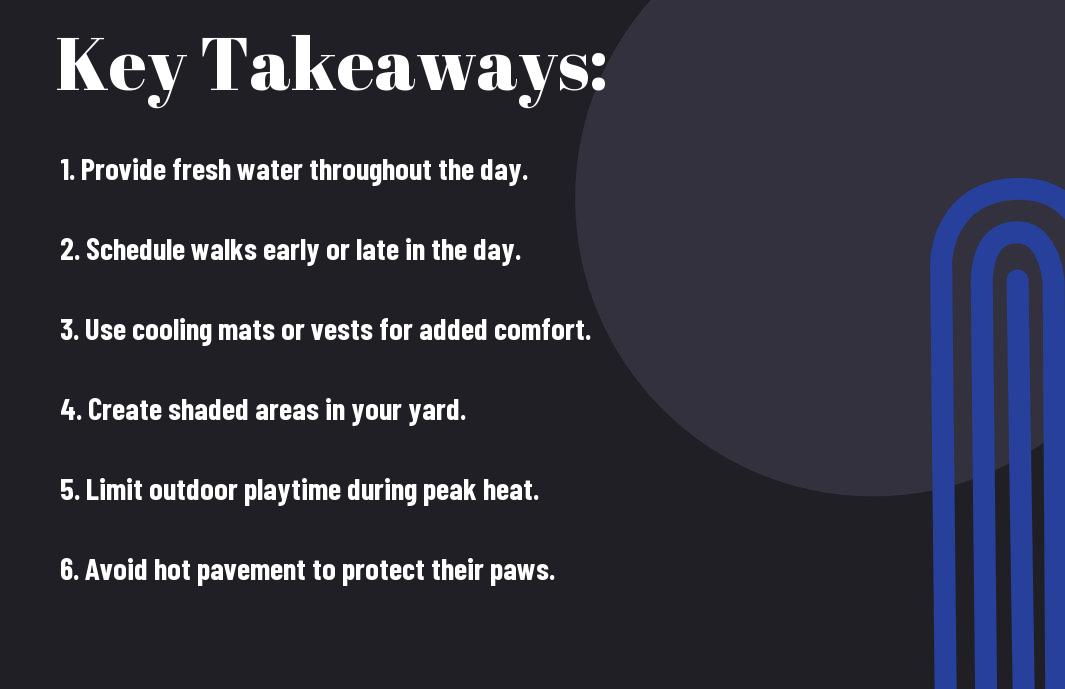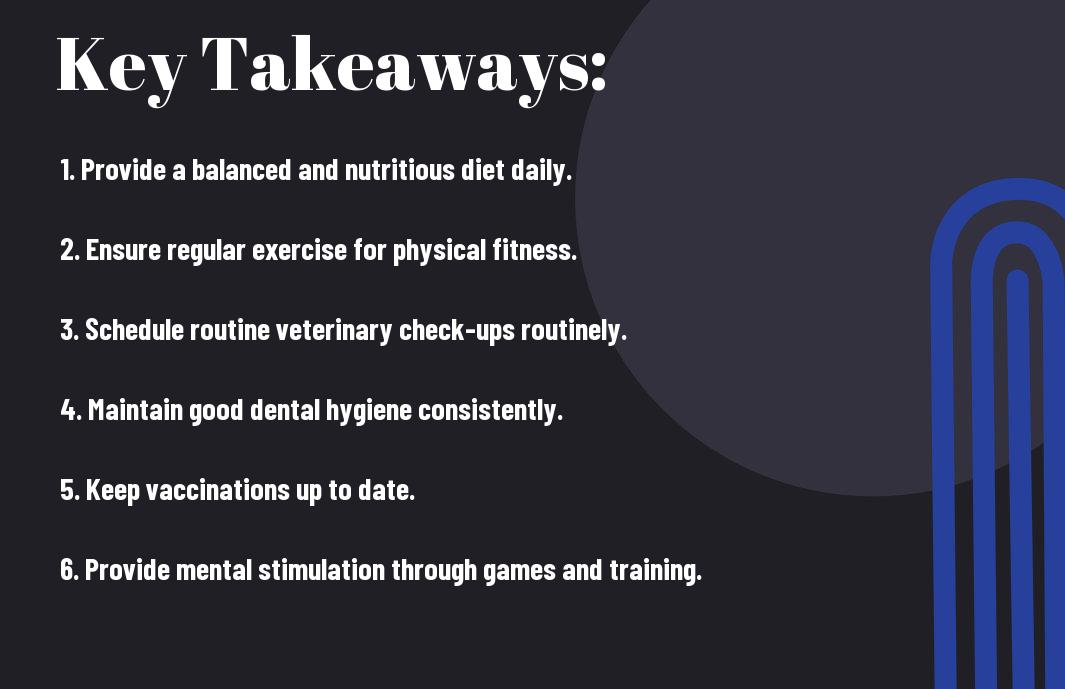Summer heat can be challenging for both you and your horse, making it important to implement effective cooling strategies. To keep your equine friend comfortable and healthy, monitor their hydration closely and provide adequate shade during peak temperatures. Incorporating regular groom sessions to remove excess sweat and using cooling wraps can significantly alleviate heat stress. Additionally, consider investing in fans or misters in your barn to enhance air circulation. By taking these measures, you will ensure your horse remains happy and healthy throughout the hot summer months.
Hydration Strategies: Keeping Your Horse Cool from the Inside Out
Importance of Hydration
Maintaining optimal hydration is vital for your horse’s health, particularly in high temperatures. Dehydration can lead to a range of issues, including impaired performance, elevated body temperature, and increased risk of colic. A horse can lose up to 12 gallons of water a day through sweat and respiration during hot weather, making regular access to fresh, clean water vital for their well-being.
Effective Hydration Techniques
Implementing practical hydration techniques ensures your horse remains cool and healthy during summer. Offering electrolyte supplements in water promotes fluid retention, while providing multiple water sources throughout the day encourages frequent drinking. Additionally, soaking hay can further enhance moisture intake, helping to reduce overall heat stress.
Consider providing your horse with 1-2 ounces of electrolyte solution in their water, especially after exercise, to help replenish lost minerals. Additionally, monitor their water intake by marking water buckets to track consumption. In extreme heat, use misters or fans in stalls, as these lower the environmental temperature, potentially prompting your horse to drink more. By implementing these strategies consistently, you’ll help your horse stay hydrated and combat the effects of summer heat effectively.
Shade and Shelter: The Essential Components of Heat Management
Creating appropriate shade and shelter for your horse is vital in managing heat stress during summer months. Providing shaded areas not only helps regulate their body temperature but also reduces stress and enhances overall well-being. Explore various options in shade structures to ensure your horse remains cool and comfortable, especially during peak heat hours.
Optimal Shade Structures for Horses
Your horse benefits most from dedicated shade structures such as run-in sheds or pergolas. These should be placed in a manner that offers maximum coverage from the sun. Consider size and design; a well-ventilated shelter can keep the air flowing while shielding your horse from direct sunlight. This enables them to seek refuge during the hottest parts of the day.
Natural Shade: Utilizing Trees and Other Landscape Features
Planting trees and hedges can provide an excellent source of natural shade for your horse. Select fast-growing species that thrive in your climate and can offer substantial coverage. Natural features create a more pleasant environment, encouraging your horse to spend time in shaded areas, thus preventing overheating.
Incorporating natural shade not only benefits your horse but enhances the landscape of your property. Trees such as oaks or maples not only offer extensive coverage but also improve air quality. Positioning paddocks or turnout areas near these natural features can maximize shade benefits. The cooler microclimate under tree canopies encourages your horse to rest and reduces their heat stress. Aim for a landscape design that combines both aesthetic appeal and functional shade, creating a healthier environment for your horse during hot summer months.

Cooling Aids: Innovative Tools to Reduce Body Temperature
| Cooling Aid | Description |
| Fans | Circulate air around your horse, reducing humidity and providing a cooling effect. |
| Misters | Release a fine mist, creating a cooling zone that lowers body temperature upon contact. |
| Cooling Blankets | Help dissipate heat and moisture through evaporation and specialized materials. |
| Ice Packs | Placed on pulse points, they reduce localized temperatures effectively. |
The Role of Fans and Misters
Implementing fans and misters in your horse’s environment can significantly decrease body temperature, especially during peak heat. Fans create airflow that enhances natural cooling, while misters introduce moisture to the air, promoting evaporation. Combining both methods helps create a comfortable microclimate for your horse, making summer days more bearable.
Cooling Blankets and Other Gear
Utilizing cooling blankets and specialized gear can enhance your horse’s comfort. These products often include materials that wick moisture away, promoting evaporative cooling. Making these tools part of your heat management strategy can lead to improved hydration levels and reduced risk of heat stress.
Many modern cooling blankets feature advanced technologies like phase-change materials that absorb heat and provide a consistent cooling effect. Using these blankets post-exercise aids in quicker recovery, as they lower horses’ body temperatures and reduce the risk of overheating. Additionally, a variety of other gear, such as cooling wraps for legs, can also support your horse’s overall well-being during hot weather, ensuring they stay comfortable while performing their best.

Nutritional Adjustments: Feeding Strategies for Hot Weather
Adjusting your horse’s diet during the heat of summer is important for maintaining performance and wellbeing. Focus on providing a diet rich in electrolytes and easily digestible forage to support hydration levels. You may want to consider a higher ratio of cool-season grasses or legume hay, which can be more palatable and provide important nutrients without taxing their system in the heat. Additionally, monitor your horse’s body condition and adjust feed amounts accordingly to prevent weight loss or dehydration.
Feed Modifications for Optimal Performance
Modifying your horse’s feed to meet the challenges posed by high temperatures enhances their performance and overall health. Reducing the grain portion and increasing forage can help maintain energy levels while minimizing heat production during digestion. Incorporating high-fiber feeds and avoiding dense carbohydrates will ensure your horse stays cool, while frequent, smaller meals prevent overheating and sustain energy throughout the day.
Supplements that Support Hydration and Coolness
Electrolyte supplements play a vital role in keeping your horse hydrated and cool in the summer heat. Look for products that include sodium, potassium, and calcium, as these help replenish lost minerals and maintain fluid balance. Adding specific herbs, like peppermint or chamomile, can also promote digestive comfort and enhance coolness.
Incorporating electrolytes into your horse’s regimen can significantly reduce the risk of dehydration. Consider a daily electrolyte supplement during hot weather or after intense workouts to replenish lost minerals. Many products also contain natural flavors to enhance palatability, encouraging your horse to drink more water. Look for options that come in easy-to-use powder or paste forms, ensuring your horse receives the right dose consistently. Be mindful of, maintaining hydration through both feed and water intake is key to effectively managing your horse’s comfort and performance in the heat.
Recognizing Heat Stress: Symptoms and Emergency Responses
Key Signs of Heat Stress in Horses
Identifying heat stress in your horse is vital for effective management. Watch for symptoms such as excessive sweating, rapid breathing, a high pulse rate, and lethargy. Other key indicators include an elevated body temperature above 101.5°F and signs of distress like anxiety or restlessness. Recognizing these signs early can be the difference between a minor issue and a serious emergency.
Immediate Actions to Take in Case of Heat Stress
Swift action can mitigate the effects of heat stress on your horse. If you notice symptoms, move your horse to a shaded area or an air-conditioned barn immediately. Offer cool water and apply cold, wet towels to areas like the neck, armpits, and groin to help lower body temperature. If symptoms persist, contacting a veterinarian is necessary.
To effectively manage heat stress, remove your horse from the heat source promptly and administer cold water baths or spray them down with fans directing airflow. Pay attention to the body temperature; use a thermometer if available. Continue cooling efforts until their temperature drops below 101°F and closely monitor their condition. Providing plenty of clean, cool water helps rehydrate your horse, but don’t force them to drink. If your horse shows no improvement within 30 minutes, or if symptoms worsen, contacting a veterinarian is advisable for further evaluation.
Conclusion
Hence, by implementing these cooling strategies, you can effectively protect your horse from the adverse effects of summer heat. Regular hydration, proper grooming, and creating shaded areas are just a few methods to ensure your horse remains comfortable and healthy during hot weather. Pay attention to signs of overheating and adapt your care routine accordingly. By prioritizing your horse’s wellbeing, you enhance their performance and overall quality of life throughout the summer months.
FAQ
Q: What are some effective ways to keep my horse cool during hot weather?
A: Ensure horses have access to plenty of fresh water and shaded areas. Use fans in stables, provide electrolyte supplements, and consider misting systems. Regularly check for signs of overheating, such as excessive sweating or lethargy.
Q: How can I adjust my horse’s exercise routine in the summer?
A: Schedule workouts during cooler parts of the day, such as early morning or late evening. Limit intense training sessions and include rest breaks. Monitor your horse closely for signs of fatigue or heat stress and adjust accordingly.
Q: What should I feed my horse to help them cope with high temperatures?
A: Focus on providing high-quality forage and consider adding electrolytes to their feed to replace lost minerals due to sweating. Keep meals smaller and more frequent to aid digestion and reduce heat production from eating. Avoid high-grain diets during extreme heat.











